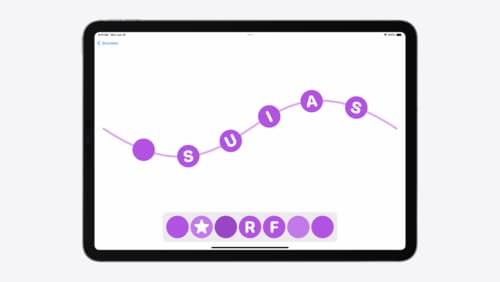How SwiftUI's State management work?
Asked on 2024-09-06
1 search
SwiftUI's state management is a key feature that allows views to be state-driven, meaning that when your view's state changes over time, SwiftUI automatically updates the UI. This eliminates the need for boilerplate code and reduces update bugs. SwiftUI maintains a representation of the user interface behind the scenes, and as data changes, new view values are created and used to update the UI.
In SwiftUI, state management is facilitated through several tools:
-
State: This is used to create a new internal source of data for a view. When you mark a view property with
@State, SwiftUI manages the storage and provides it back for the view to read and write. For example, a view might use state to keep track of a rating value, which can be incremented or decremented through user interaction. -
Binding: This creates a two-way reference to the state of another view. It allows a view to read and write to a state that is managed elsewhere, enabling synchronization between views. For instance, a container view might provide a binding to a child view, ensuring that both views reflect the same state.
-
Observable Objects: SwiftUI can track dependencies on specific properties used in view bodies. When these properties change, SwiftUI updates the views that depend on them.
SwiftUI's state management is designed to be declarative, meaning that views are descriptions of what the UI should look like based on the current state, rather than being long-lived object instances that receive imperative commands.
For more detailed information, you can refer to the session SwiftUI essentials (08:50) which covers the fundamentals of views and state management in SwiftUI.

Enhance your UI animations and transitions
Explore how to adopt the zoom transition in navigation and presentations to increase the sense of continuity in your app, and learn how to animate UIKit views with SwiftUI animations to make it easier to build animations that feel continuous.

What’s new in SwiftUI
Learn how you can use SwiftUI to build great apps for any Apple platform. Explore a fresh new look and feel for tabs and documents on iPadOS. Improve your window management with new windowing APIs, and gain more control over immersive spaces and volumes in your visionOS apps. We’ll also take you through other exciting refinements that help you make expressive charts, customize and layout text, and so much more.

SwiftUI essentials
Join us on a tour of SwiftUI, Apple’s declarative user interface framework. Learn essential concepts for building apps in SwiftUI, like views, state variables, and layout. Discover the breadth of APIs for building fully featured experiences and crafting unique custom components. Whether you’re brand new to SwiftUI or an experienced developer, you’ll learn how to take advantage of what SwiftUI has to offer when building great apps.
